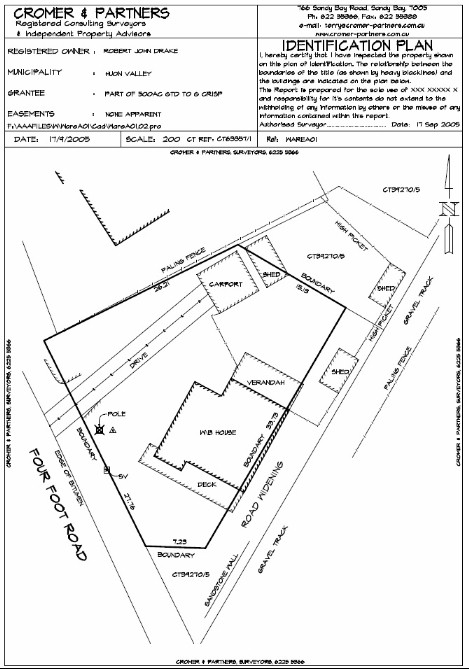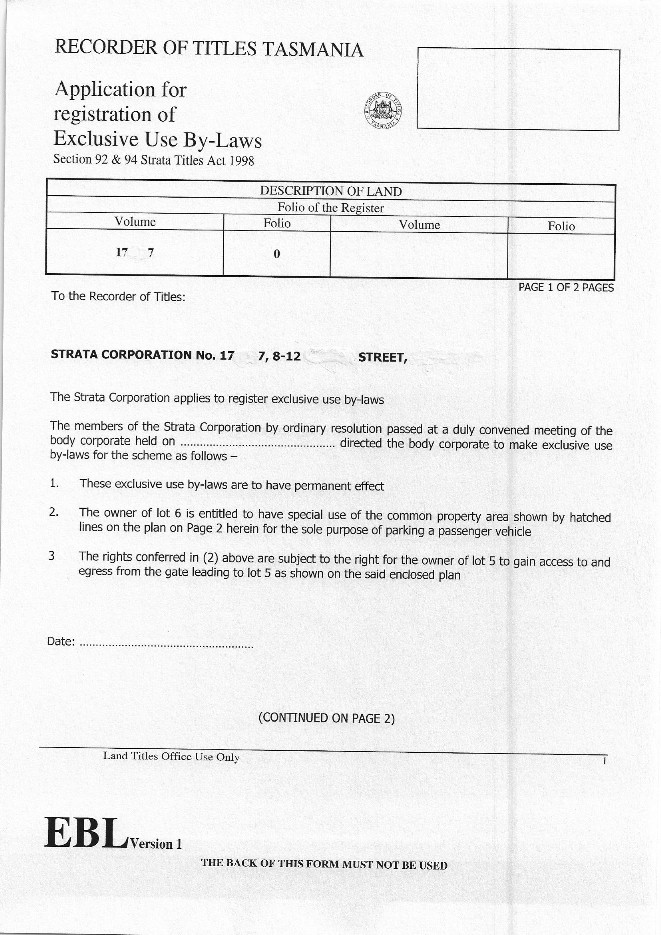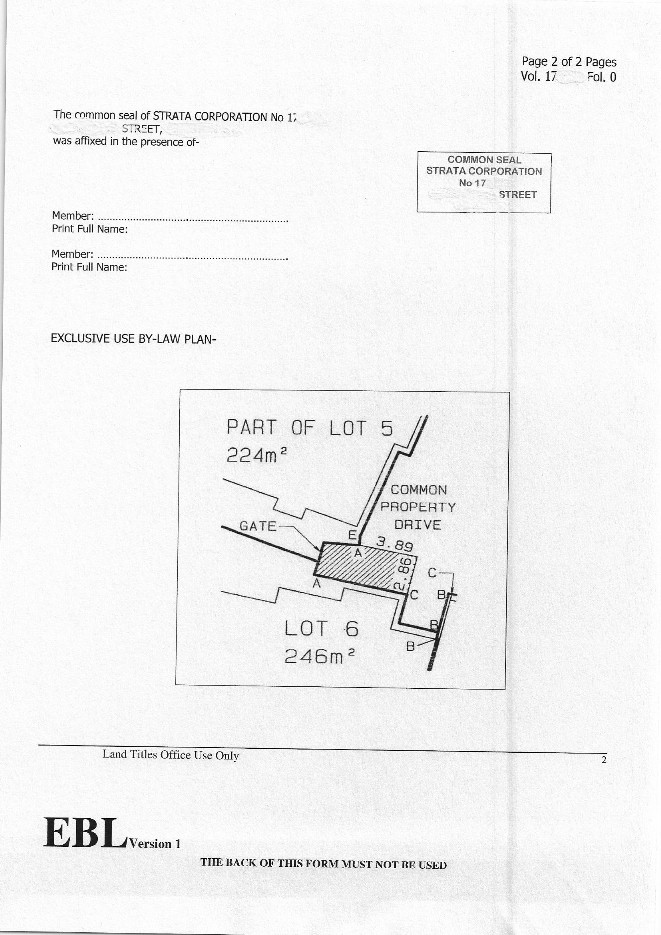Easement by Possession
CLAIMING AN EASEMENT BY POSSESSION
Background
A person who has enjoyed the use of another persons land and wishes to acquire an easement to formalize those rights may apply to the Recorder of Titles under Part IXB of the Land Titles Act 1980.
The rights being claimed must be of a type that have been recognised by the courts as an easement – right of way, overhanging eaves, party wall, drainage easement, etc.
Periods of use
A person must prove 15 years use against a title owner who is capable of defending his or her land.
A person must prove 30 years use if the title owner is the Crown, is deceased or is under guardianship.
An easement must be attached to land of the user
An easement cannot be acquired where there is no land capable of benefitting from the easement, which means an applicant needs to own land touching or concerning the easement.
Requirements for an application
An application must show that-
·
The easement has been enjoyed as of right, meaning open, peaceful and without the land owner’s permission
·
No written or oral agreements have been made with the land owner to use the land
·
There has been no common ownership between the land of the applicant and the land the easement is being claimed over
·
The land owner knew, or ought to have known, of the use of the easement
·
The use of the land has been of a continuous nature
·
The applicant owns the land to which the easement will be attached to
Supporting evidence
At least one other independent person must produce evidence, usually in the form of a statutory declaration, to confirm the land has been used by an applicant over the period being claimed.
Plan of survey
An application for an easement based on long possession is to be supported by a plan of survey prepared by a registered land surveyor, unless the Recorder directs otherwise.
Applicant to notify the land owner
Before lodging an application with the Recorder, a person must give written notice of their intended claim to the land owner.
If the land owner does not object the Recorder must consider the application.
If the land owner lodges an objection then the Recorder may not consider the application unless she is satisfied that the applicant would suffer “serious hardship” if the application is not granted.
In the case of a right of way; the Recorder apparently considers “serious hardship” as meaning that no other access to the land is physically possible. The Recorder does not consider the prohibitive cost of building an alternative access as “serious hardship”. This is quite often where the application fails. (not necessarily in the case of claiming title by possession)
Power of land owner to lodge a caveat
An owner whose land is being used by another person may lodge a caveat with the Recorder giving notice that the person using his or her land is doing so with the permission of the land owner. This alerts all to the fact that the ‘use’ is with his permission and therefore no claims can be made.
A caveat stops time from both accruing and running in favour of a person using the land that may amount to an easement.
The caveat is recorded on the land owner’s title.
The Recorder must give notice of the caveat to the person using the land and exercising rights that may amount to an easement.
Caveat forbidding granting of an application
Any person claiming an estate or interest in the land being claimed by an easement user may lodge a caveat with the Recorder forbidding the granting of the application, should such an application affect their interest in the land.
BRIEF OVERVIEW OF ACQUIRING AN EASEMENT BY POSSESSION
Background
Under the legislation a person who has used or enjoyed rights over a 15 year period (or 30 years in the case where an owner is under a disability – including being deceased) and wishing to acquire an easement by possession may apply to the Recorder of Titles under Part IXB of the Land Titles Act 1980.
Requirements for an application
An application must show that-
·
The easement has been enjoyed as of right
·
No written or oral agreements as to use have been made
·
There has been no unity of seisin between the dominant and servient tenements
·
The owner knew, or ought to have known, of the enjoyment of the easement
·
The right of easement is of a continuous nature
·
The applicant owns the dominant tenement.
At least one other independent person must produce evidence, in the form of a statutory declaration and perhaps photographs, in support of the easement being used and claimed.
An application is to be supported by a plan of survey showing the land under occupation as an easement, unless the Recorder directs otherwise.
Applicant to notify owner of servient tenement
Before lodging an application with the Recorder, a person must give written notice of the claim to the owner of the servient land.
If the owner does not object the Recorder must consider the application.
If the owner lodges an objection, then the Recorder may not consider the application unless she is satisfied that the applicant would suffer “serious hardship” if the application is not granted.
Power of owner to lodge a caveat
An owner of land may lodge a caveat with the Recorder giving notice that a person exercising rights that may amount to an easement is doing so with the permission of the owner. A caveat stops time from both accruing and running in favour of a person exercising rights that may amount to an easement. The caveat is recorded on the owner’s own folio in the Register.
The Recorder must give notice of the caveat to the person named in the caveat as exercising rights that may amount to an easement.
Whilst this provision stops the limitation period from further being complied with, it does not seem to stop the dominant land user from using the land, because he or she is presumed to be doing so “with the permission of the owner”.
Caveat forbidding granting of an application
Any person claiming an estate or interest in the land in an application may lodge a caveat with the Recorder forbidding the granting of the application.








